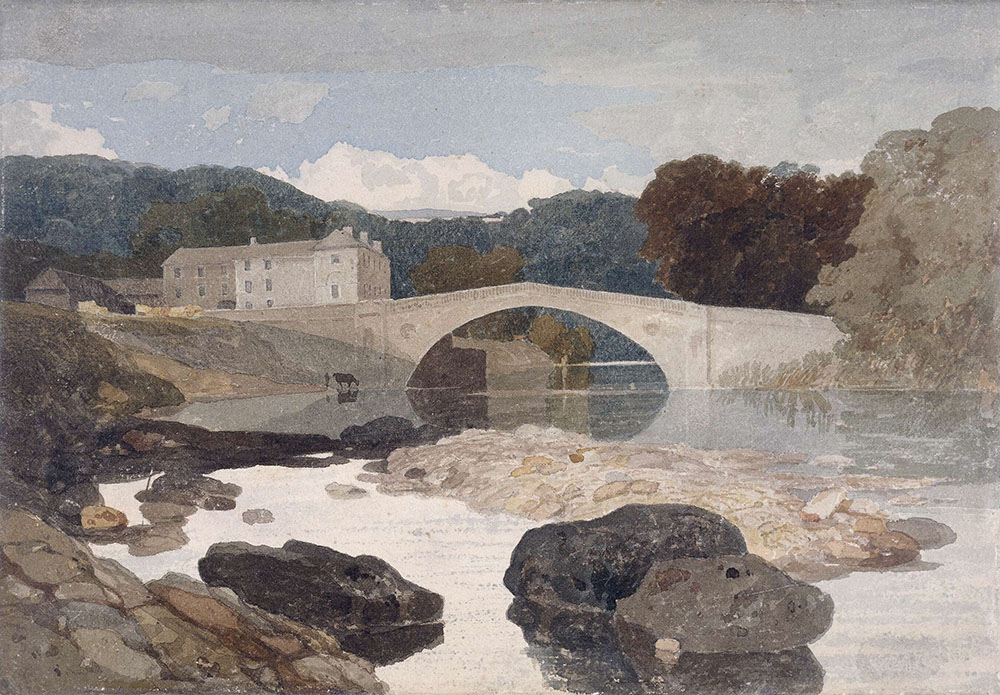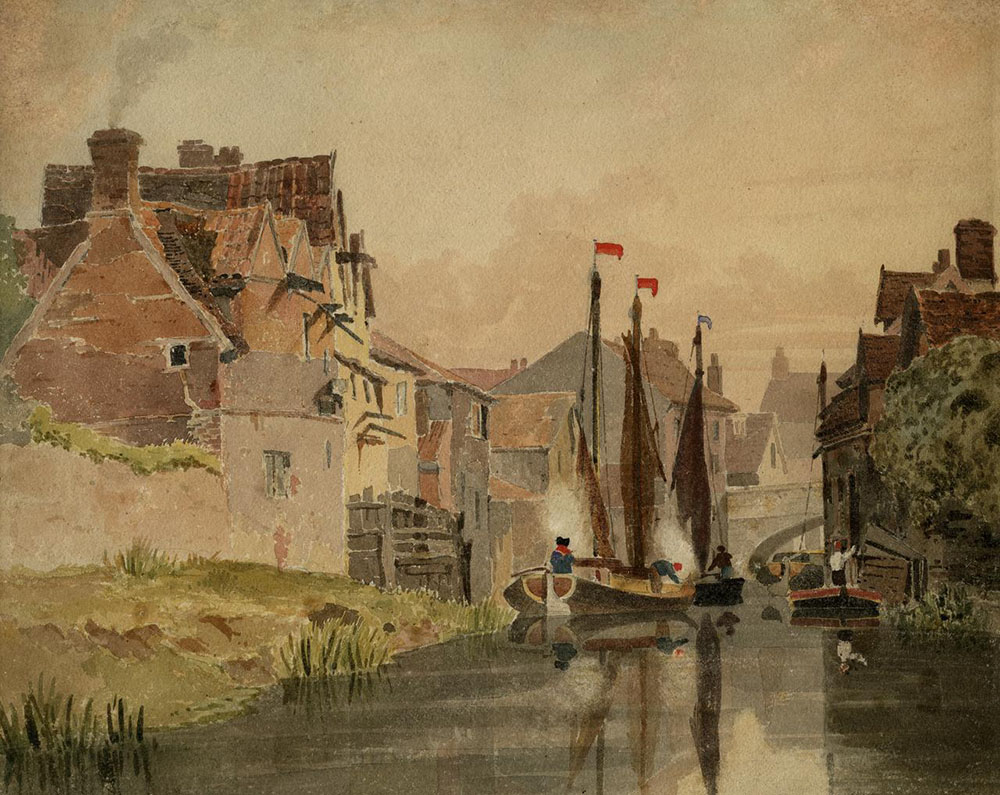The Norwich School of Painters or the Norwich Society of Artists was the first art movement in the UK to be linked to a specific British region. This movement existed from 1803 to 1834 and during this period it attracted a large number of artists who painted mostly landscapes of Norfolk and Norwich. Prominent members of this movement were John Crome, Robert Ladbrooke, John Sell Cotman, Joseph Clover, Henry Bright, George Vincent, Joseph Stannard, John Berney Crome.
Notable Artwork from the Norwich School






The Beginnings of the Norwich School of Painters
John Crome and Robert Ladbrooke founded The Norwich Society of Artists in 1803. This association is conceived as a meeting place for artists, both professionals and self-taught. Artists who would join the school studied and participated in polemics concerning not only painting but also sculpture and architecture.
The first exhibition of the Norwich School was held in 1805. It achieved great success and started the tradition of annual exhibitions that lasted as long as the group existed. From 1828 to 1833 the exhibitions were organized within The Norfolk and Suffolk Institution for the Promotion of the Fine Arts.
Guided by the ideas of contemplation of contemporary painting as well as the lines of its progress, John Crome, Robert Ladbrooke and John Sell Cotman, who joined the association in 1807, formed an institutional framework that included space for learning, work and exhibition. Examining the form of the landscape, the members of this movement opened up questions of form, color and technique, anticipating phenomena that would develop later during the 19th century through Naturalism and Impressionism.
Norwich School Style and Influences
French and Dutch Baroque painting had a key influence on the development of the artistic expression of Norwich School painters.
These painters relied on the structure of the painted composition and the palette of Nicolas Poussin and Claude Lorrain, but rejected the refined forms of the so-called ideal landscape characteristic of the Baroque.
Also, Norwich school painters were not close to mythological themes or allegories. They dealt with their immediate surroundings, without tendencies towards universal themes. Dutch Golden Age painting is probably the most noticeable source of inspiration for this English school. It is precisely the turn of these painters towards scenes from the humble life of people, scenes from rural areas, farms, and windmills that are connected with Dutch landscape painting of the 17th century.
Omitting the dramatic effects of the Chiaroscuro Norwich school, the painters relied on more natural tones. The forerunner of what will develop as Naturalism in later decades can be seen in the example of painting of this school, which among the first gave rise to landscapes with recognizable, authentically presented plant species characteristic of the region. In addition to landscapes, the works of these painters also included views of cities, portraits and still lifes. The most common techniques were oil, watercolor and etching.
Major Patrons of the Norwich School of Painters
An important factor in the development of this artistic movement was the support of prominent city families. Although Norwich School painters exhibited outside of Norwich, even at the Royal Academy of Arts in London, their primary focus was on work in Norwich and Norfolk. The famous family of artistic patrons was the Gurney family, for which John Crome personally worked. The Colman family has amassed the largest collection of Norwich School painters, and it is on display at the Norwich Castle Museum.
John Crome
John Crome was born into a working-class family in Norwich in 1768. With Ladbrooke, with whom he was a childhood friend, he founded the Norwich Society of Artists in 1803. He worked as a drawing teacher all his life. Many of the painters who were significant representatives of the Norwich School were his students, such as James Stark and Edward Thomas Daniell. Crome was a very prolific author, working in the techniques of oil, watercolor, and etchings. The landscape was the genre to which he most often returned. Crome has been President of the Society several times. Both his sons John Berney Crome and William Henry Crome became painters and were members of the Norwich School.
Robert Ladbrooke
Ladbrooke was born in Norwich in 1768. In addition to John Crome, he was credited with founding the Norwich School of Painters. Ladbrooke initially developed as a portrait painter, but over time he focused on landscape painting, which was the dominant genre of the movement. In 1808 Ladbrooke was elected vice-president of the Norwich School of Painters. His sons John Berney Ladbrooke and Henry Ladbrooke were successful painters and also belonged to the Norwich School.
John Sell Cotman
John Sell Cotman was born in Norwich in 1782 into a family of merchants. After schooling in Norwich he went to London in 1798 where he met Peter de Wint and J. M. W. Turner. He returned to Norwich in 1806 and the following year became a member of the Norwich Society of Artists, where he exhibited for the first time at the annual exhibition. His opus grew rapidly, he worked in the technique of watercolors as well as in oil and etchings. He painted portraits, landscapes, maritime, cityscapes. Cotman became President of the Society in 1811. In 1834, he was appointed Master of Landscape Drawing at King’s College School in London. His return to London marked the end of the Norwich School. His sons John Joseph Cotman and Miles Edmund Cotman were also painters.
Notable Artists
- John Crome (1768 – 1821)
- Robert Ladbrooke (1768 – 1842)
- John Sell Cotman (1782 – 1842)
- Joseph Clover (1779 – 1853)
- Henry Bright (1810 – 1873)
- George Vincent (1796 – c.1832)
- John Middleton (1827 – 1856)
- Joseph Stannard (1797 – 1830)
- John Berney Crome (1794 – 1842)
- Eloise Harriet Stannard (1829–1915)
- John Cantiloe Joy (1805 – 1859)
- William Joy (1803-1865)
- James Stark (1794 – 1859)
- John Thirtle (1777 – 1839)
- James Sillett (1764 – 1840)
Related Art terms
- Art Colony
- Landscape painting
- Naturalism
- Realism
